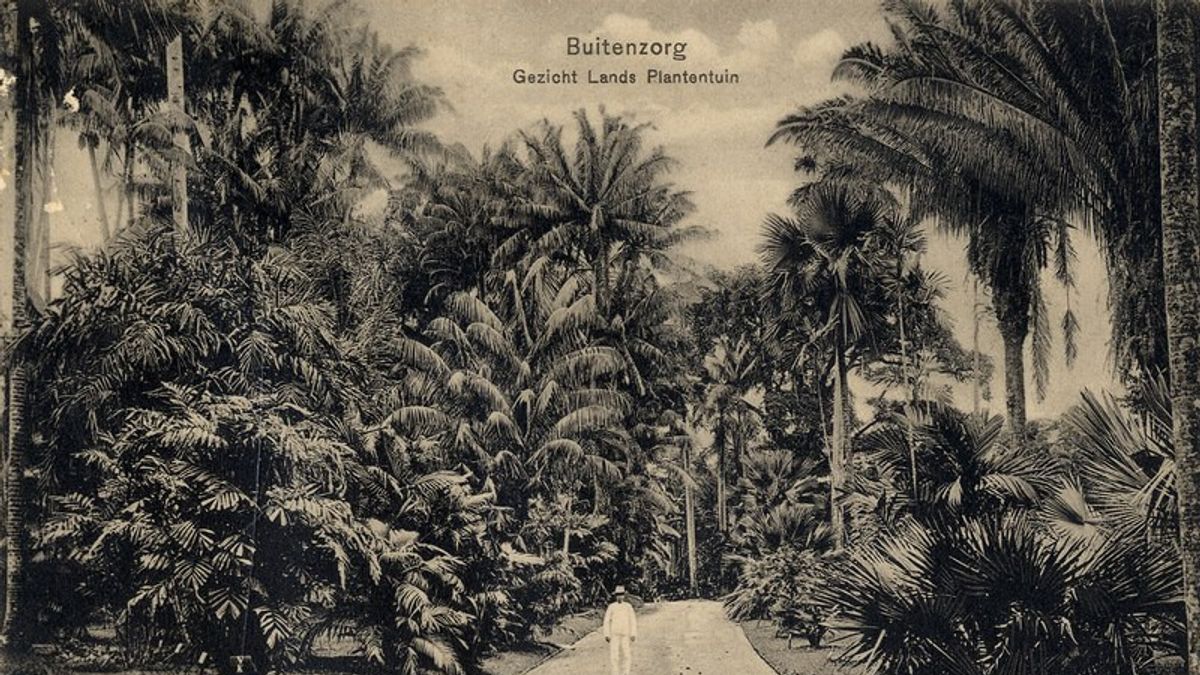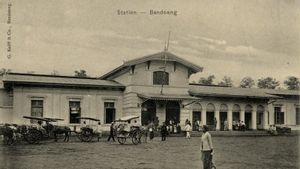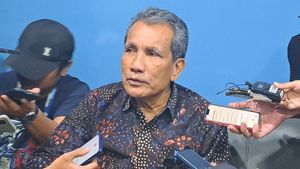JAKARTA - Today's history, 205 years ago, May 18, 1817, the Bogor Botanical Gardens was officially established. The establishment was carried out with the blessing of the Governor-General of the Dutch East Indies Godert Alexander Gerard Philip van der Capellen. For the sake of science, he thought.
He also named the garden as 's Lands Plantentuin te Buitenzorg. However, the forerunner of the Bogor Botanical Gardens has existed since the reign of Lieutenant Governor Thomas Stamford Raffles. The garden was started by Raffles and his wife Olivia Mariamne Devenish aka Olivia Raffles.
It may be that the British colonial era in the Nusantara was only for a short time. However, the impact was enormous. Lieutenant Governor Thomas Stamford Raffles (1811-1814) was behind it. Raffles' breakthroughs are often considered revolutionary.
Raffles was the mastermind who was able to bombard the Yogyakarta Palace and also the person who abolished slavery in the Indies. Another contribution of Raffles is his dedication to the science of the world. He was always curious about the potential contained by the motherland. Culture and botany, especially.

The agenda will not run smoothly if Raffles does not immediately choose the Buitenzorg area (now: Bogor) as a place to live. Raffles' decision not to want to have an office in Batavia was the end. He did not want to continue the reign of the previous leader of the Dutch East Indies. Raffles thought that having an office in Batavia was like committing suicide by contracting a tropical disease.
Raffles and his wife Olivia also occupied the Buitenzorg Palace (now: Bogor Palace). The two of them enjoyed life in that Rain City. In fact, Raffles and Olivia even made a beautiful garden in the courtyard of their palace, all because of their interest in the world of botany.
“The first thing Raffles did after gaining power was to head for the hills. The climate of Batavia has killed his best friend, and the rainy season, when according to the news, the sewage of the swamps and the air of disease is at its strongest, is coming.”
“Fortunately, some 50 kilometers to the south, there is a cool spot that seems to offer the perfect remedy against the health-damaging beach heat. Weltevreden (now: the area around Banteng Square) may have the meaning: very satisfying. However, there is a place named after a cliche that is located on the slopes of a nearby mountain: Buitenzorg which means without attention in Dutch,” says Tim Hannigan in the book Raffles dan Invasi ke Jawa (2012).

Raffles and Olivia's ideas were revolutionary. Even if they were no longer in Buitenzorg. After that, their garden in Buitenzorg Palace was eyed by many people. The German botanist, CGC Reindwardt, is one of them. Reindwardt wanted the garden to become a useful garden.
He also wanted the place to become a place for agricultural teacher education and a place for collecting plants. His idea was accepted. The Governor-General of the Dutch East Indies, Godert Alexander Gerard Philip van der Capellen approved the idea.
Finally, the garden that previously belonged to Olivia Raffles was developed into 's Lands Plantentuin te Buitenzorg on 18 May 1817. The construction of the Bogor Botanical Gardens inspired the Dutch to build another center for learning the world of botany.
“Bogor Botanical Gardens was formed in 1817 by the Kingdom of the Netherlands. Then over time, the Kingdom of the Netherlands established the Bibliotheca Bogoriensis (1842), Herbarium Bogoriense (1844), Cibodas Botanical Gardens (1860), Treub Laboratory (1884), and Museum Zoologicum Bogoriense (1894)," concluded Jatna Supriatna in his own book Otobiografi Jatna Supriatna (2021).
SEE ALSO:
The English, Chinese, Japanese, Arabic, and French versions are automatically generated by the AI. So there may still be inaccuracies in translating, please always see Indonesian as our main language. (system supported by DigitalSiber.id)














